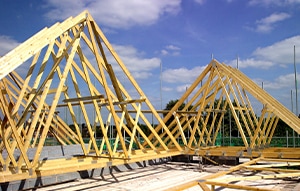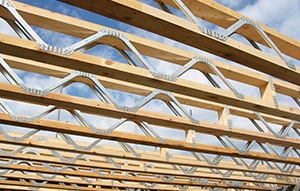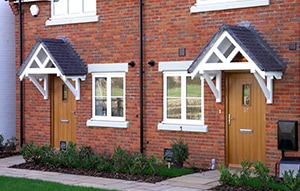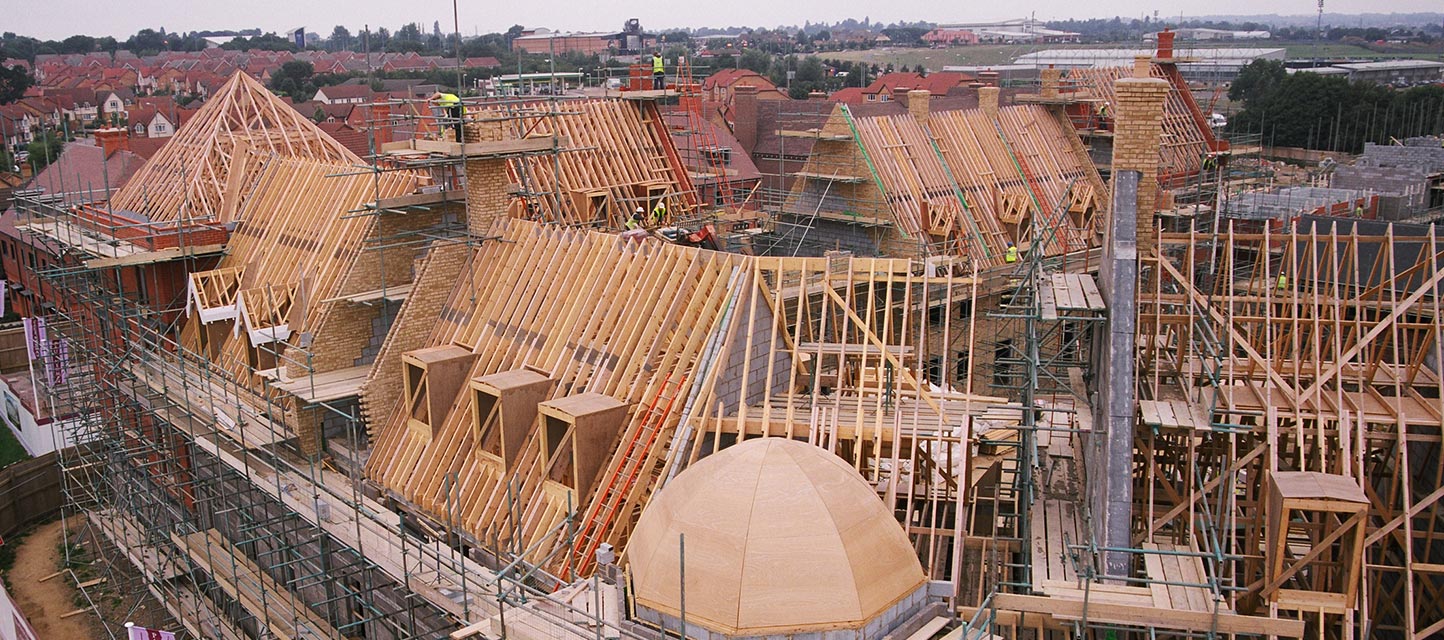Timber supplies – what’s the latest situation for UK housebuilders?
Timber supplies have been a major concern for many UK housebuilders. Our technical timber sales manager, Tom Hiles, recently spoke to Nick Boulton, head of technical and trade policy at Timber Development UK and chief executive of the Trussed Rafter Association, about trends in structural timber sales, the current state of the market for timber in construction, what’s happening with prices, and his tips for increased supply chain resilience for housebuilders.
Watch the full video at: https://youtu.be/jYtFcqF-bG0
[Tom] Why did we experience such shortages in structural timber last year?
[Nick] It’s important to understand where our timber suppliers come from. Roughly a third of the wood used by the construction sector comes from within the UK itself. That means that the other two-thirds are mainly imported from Northern and Central Europe, with countries like Sweden, Finland, Latvia, Germany and Austria being our main suppliers.
Traditionally, structural timber supplies had been very stable. Until we got to 2020, we’d never seen any significant shortages. It was the COVID pandemic that really triggered those shortages for lots of underlying reasons.
High demand during the first lockdown sucked all of the material out of the UK supply chain, and meant that all of the material coming in was pre-ordered. That meant there was nothing left on the ground.
Furthermore, European countries and global markets all saw a similar uplift in demand for structural timber. And that effectively meant there was an increasing number of buyers chasing a fixed amount of wood.
Wood is a sustainable product. And the reason it’s sustainable is because we’re only taking out of the forest what is being replaced. It’s very difficult to cope with sudden, massive jumps in demand, which is what we saw during COVID.
[Tom] What is the current state of the structural timber market?
[Nick] Timber supplies are much more stable. The news that we have from the Swedish sawmills, for instance, suggests that their production is very strong at the moment. They’re available to move their goods over to the UK, so I think the position is currently very good. There’s also plenty of wood in the supply chain, so I certainly don’t foresee any short-term shortages that will also have an impact on price.
Due to there being plenty of stock on the ground, I certainly think the prices have started to fall. Although there are a lot of macro-economic factors and global factors taking place in the background, such as the Russian invasion of Ukraine, from a structural wood point of view, they don’t really influence the supply of wood coming into the UK for structural timber purposes.
There will certainly be plenty of wood available at a reasonable price for the rest of this year. However, a lot of people are looking back to the prices that they were paying at the end of 2019 and asking if we’re going to go back to that level. Realistically, the answer has to be ‘no’; the prices back then were at the lowest point we’d seen since 2007. They’ll never go back to what they were, but they will stabilise at a higher price level.
[Tom] What are your predictions for structural timber supplies and costs for the rest of this year and next?
[Nick] This year, there’s the opportunity to buy ahead. This means you can hold the wood in stock or work with a supplier to get a price that’s fixed for three or six months ahead.
It’s more difficult to predict what’s going to happen next year with timber supplies. What we need to do, to some extent, is return to the situation that we had before the financial crisis in 2007. The players in the supply chain were much more realistic about prices at that point. They weren’t fixing themselves so far ahead into the future, which, for wood and wood products is unrealistic.
Right now, we can’t predict exactly what the prices are going to be. But they will certainly be much more stable than they have been.
[Tom] What tips would you give to housebuilders to ensure supply chain resilience and strong structural timber supplies in future?
[Nick] The key is collaboration. Closer co-operation along the supply chain is something that’s really come out strongly since the COVID crisis.
When it comes to wood and construction supply chains, we’ve got to work more in partnership going forward. If we’re constantly competing against one another, then that’s really a no-win situation. But if we can work together in terms of product availability and demand, that makes life much easier for all of us. It also makes prices much more stable too.
If timber suppliers and timber engineering firms like Scotts can predict in advance what demand is going to be, they can realistically set out their logistics, shipping schedules and production schedules, which potentially makes prices much more stable.
Watch the full 12-minute interview between Tom and Nick here
If you would like to speak to one of our team, simply fill out your details below and a member of our sales team will be in touch very soon to discuss your project requirements.
If you would like to speak to one of our team, simply fill out your details below and a member of our sales team will be in touch very soon to discuss your project requirements.
- Copyright © Scotts of Timber 2024
- Privacy Policy






















